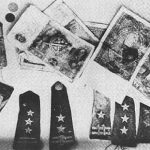During World War II, thousands of German “Propaganda Company” (PK) photographers took at least three and a half million pictures of every front on which the Germans were fighting. Hundreds of these photographs were published in mass circulation illustrated magazines and newspapers and seen by millions of readers. These images helped in significant ways to shape the way that Germans and Europeans saw the war between 1939 and 1945 and also to affect the visual memory of World War II up to the present day.
Benno Wundshammer (1913-1987) was one of these PK photographers. During World War II he was attached to the German Luftwaffe. He took photographs on almost all of the fronts—Poland, France, the Balkans, Russia, North Africa, Italy—where the German army fought. After 1945, he acknowledged that his images had often been used in the service of Nazi propaganda but dcnied that this had anything to do with their innate qualities. Wundshammer depicted himself as a craftsman intent only upon taking “good” pictures of the air-war. Yet it was this same self-image as a skilled practitioner of his craft, relentlessly searching for the “best” pictures of the war, that made Wundshammer so valuable to the Nazi regime. His pride in his work prevented him from ever questioning the job he was being asked to do. Nor were any of the photographs that Wundshammer submitted for publication seriously at odds with the visual needs of the Nazi regime.

Wundshammer was well-placed to take photographs of one of the central components and key emblems of Hitler’s new devastating Blitzkrieg—German warplanes, especially the Stuka dive bomber. He quickly discovered, however, that considerable difficulties confronted any photographer who wanted to take “good” pictures of the most dangerous moments of combat in the air. The central dilemma confronting the photographer was that the most dramatic moments of combat in the air which would have produced the best pictures were also the most dangerous. During combat in the air, the photographer had to man his machine gun because every single weapon on board had to be fired at the enemy. Sheer luck, as well as the photographer’s ability and experience, would determine whether he would be able to take any photographs while also shooting at the enemy. Confronted with the formidable difficulties of taking “good” pictures from a fast-moving plane, Wundshammer came to the conclusion that photographs alone could not show what he had experienced during an air battle; he would also have to write about it afterwards. In 1941, Wundshammer published Flyers-Knights-Heroes.With the Shark Squadron in France and other Reports of Combat. The book was produced by Verlag G. Bertelsmann in Gütersloh, a firm that made a great deal of money under the Nazis publishing very popular “war books.”
Wundshammer’s experience reminds us that what we remember visually as war depends not only upon what we can see in war photographs but also upon what these photographs do not, cannot, or will not show us.

You may also like:
Steven Hoelscher and Andrea Gustavson’s feature article on the Magnum photo archive and our suggested further reading on Magnum and photojournalism
And Joan Neuberger on digitilized photos from WWII available on Wikimedia Commons.
_________________________________________________________________________________________
The views and opinions expressed in this article or video are those of the individual author(s) or presenter(s) and do not necessarily reflect the policy or views of the editors at Not Even Past, the UT Department of History, the University of Texas at Austin, or the UT System Board of Regents. Not Even Past is an online public history magazine rather than a peer-reviewed academic journal. While we make efforts to ensure that factual information in articles was obtained from reliable sources, Not Even Past is not responsible for any errors or omissions.



